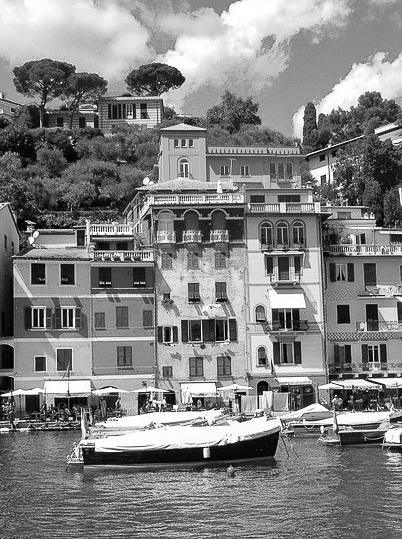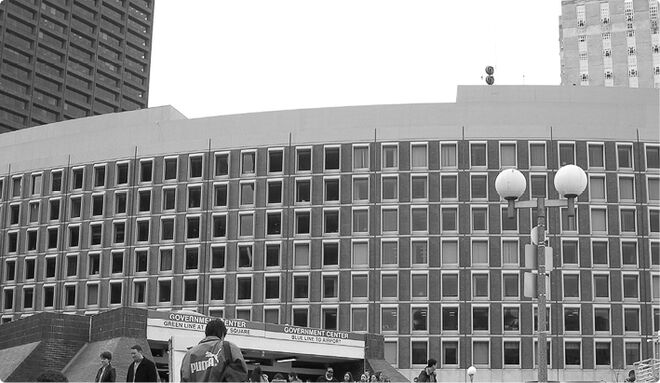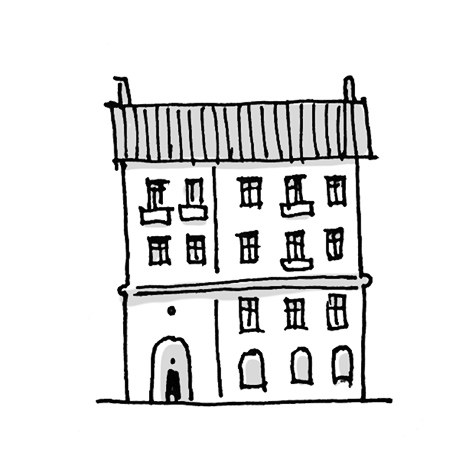11.2. Small Groups Of Elements
Aus Pattern Language Wiki
(Weitergeleitet von .../Small Groups Of Elements)
In laying out a Public-Private Place Management, a Walkable Streetscape or a specific building or structure, consider the groupings of elements and whether they are legible to residents.
Problem-statement: There is something inherently appealing and satisfying in compositions that are groups of small numbers of elements, typically two, three or four, but rarely more than seven.
Discussion: There is evidence that the human brain prefers to view compositions made up of nested small groups, which are easier to grasp mentally. George A. Miller’s classic 1956 paper “The Magical Number Seven, Plus or Minus Two” showed that people prefer these kinds of compositions, made up of subsidiary elements or “chunks” as he called them, totaling a maximum of approximately seven elements (up to as many as nine) within any one group.¹
Most traditional buildings adhere remarkably well to this pattern. It seems to have its roots in the grouping patterns that form spontaneously in nature, and that humans have encountered repeatedly in their evolutionary history — for example, the Fibonacci Sequence, in which each number is a sum of the two preceding numbers, i.e. 1, 1, 2, 3, 5, 8…
Many contemporary buildings deliberately violate this pattern, favoring a relentless large-scale repetition. They do so in what one architect has called an “alchemistic promise to transform quantity into quality through abstraction and repetition,” which he dubbed a failure and a hoax. But this design trick is certainly attention-getting, probably because it contrasts so sharply with natural structures. Of course, getting attention is not the same as creating satisfying human habitats.
There is evidence that monotonous repetition tires the brain, which keeps on computing to find hierarchical meaning missing from what the eye sees. Complex systems (including living systems) avoid monotonous repetition by grouping elements into clusters, then repeating those clusters. This process can be understood as the creation of hierarchical scales, which result in a Fractal Pattern below. As in music, repetition needs to be anchored in rhythm with sufficient complexity.
Therefore:
Follow a rule of thumb of grouping elements, and making groups of groups — especially twos, threes, and fours. Avoid designs that repeat more than nine elements at any one scale.
This pattern is a valuable aid in achieving Human-Scale Detail and other characteristics of a more legible, human-centered design. …
¹ The classic paper by George A. Miller has been widely influential. See Miller, G. A. (1956). The magical number seven, plus or minus two: Some limits on our capacity for processing information. Psychological Review, 63(2), 81. Available on the Web at https://pure.mpg.de/rest/items/item_2364276/component/file_2364275/content
Mehaffy, M. et al. (2020). SMALL GROUPS OF ELEMENTS (pattern). In A New Pattern Language for Growing Regions. The Dalles: Sustasis Press. Available at https://pattern-language.wiki/.../Small_Groups_Of_Elements
SECTION I:
PATTERNS OF SCALE
1. REGIONAL PATTERNS
Define the large-scale spatial organization…
1.4. 400M THROUGH STREET NETWORK
2. URBAN PATTERNS
Establish essential urban characteristics…
3. STREET PATTERNS
Identify and allocate street types…
4. NEIGHBORHOOD PATTERNS
Define neighborhood-scale elements…
5. SPECIAL USE PATTERNS
Integrate unique urban elements with care…
6. PUBLIC SPACE PATTERNS
Establish the character of the crucial public realm…
7. BLOCK AND PLOT PATTERNS
Lay out the detailed structure of property lines…
8. STREETSCAPE PATTERNS
Configure the street as a welcoming place…
9. BUILDING PATTERNS
Lay out appropriate urban buildings…
10. BUILDING EDGE PATTERNS
Create interior and exterior connectivity…
10.1. INDOOR-OUTDOOR AMBIGUITY
SECTION II:
PATTERNS OF MULTIPLE SCALE
11. GEOMETRIC PATTERNS
Build in coherent geometries at all scales…
11.2. SMALL GROUPS OF ELEMENTS
12. AFFORDANCE PATTERNS
Build in user capacity to shape the environment…
13. RETROFIT PATTERNS
Revitalize and improve existing urban assets …
14. INFORMAL GROWTH PATTERNS
Accommodate “bottom-up” urban growth…
15. CONSTRUCTION PATTERNS
Use the building process to enrich the result…
SECTION III:
PATTERNS OF PROCESS
16. IMPLEMENTATION TOOL PATTERNS
Use tools to achieve successful results…
16.2. ENTITLEMENT STREAMLINING
16.3. NEIGHBORHOOD PLANNING CENTER
17. PROJECT ECONOMICS PATTERNS
Create flows of money that support urban quality…
17.4. ECONOMIES OF PLACE AND DIFFERENTIATION
18. PLACE GOVERNANCE PATTERNS
Processes for making and managing places…
18.3. PUBLIC-PRIVATE PLACE MANAGEMENT
19. AFFORDABILITY PATTERNS
Build in affordability for all incomes…
19.1. INTEGRATED AFFORDABILITY
20. NEW TECHNOLOGY PATTERNS
Integrate new systems without damaging old ones…
20.2. RESPONSIVE TRANSPORTATION NETWORK COMPANY


